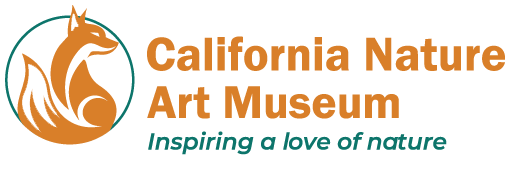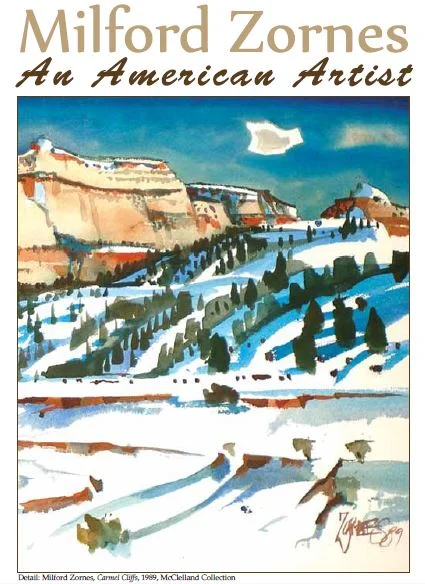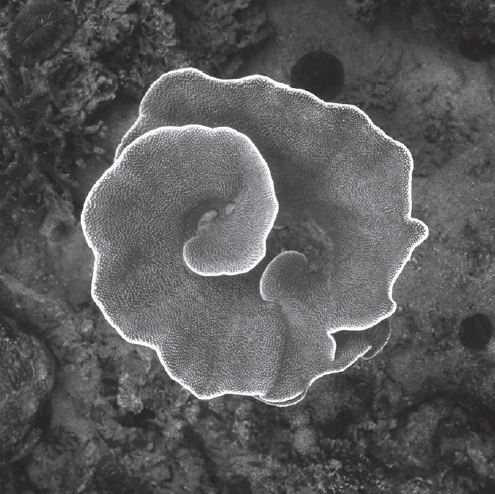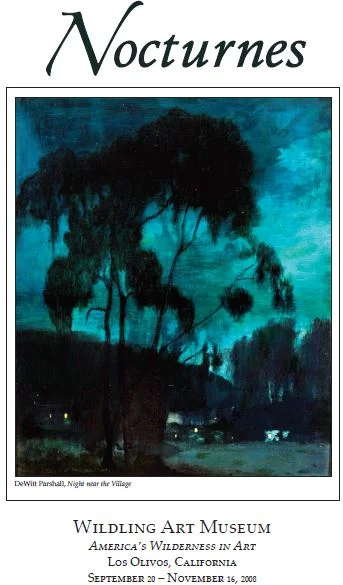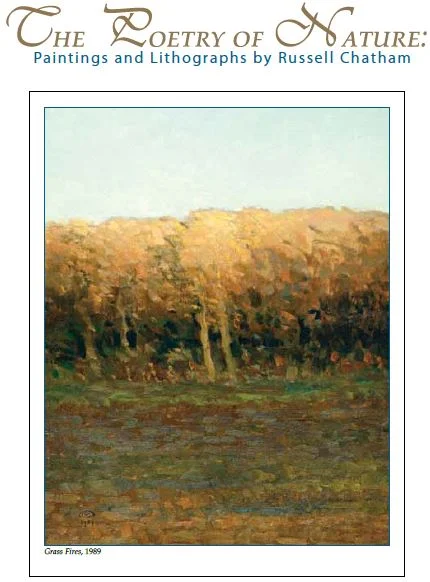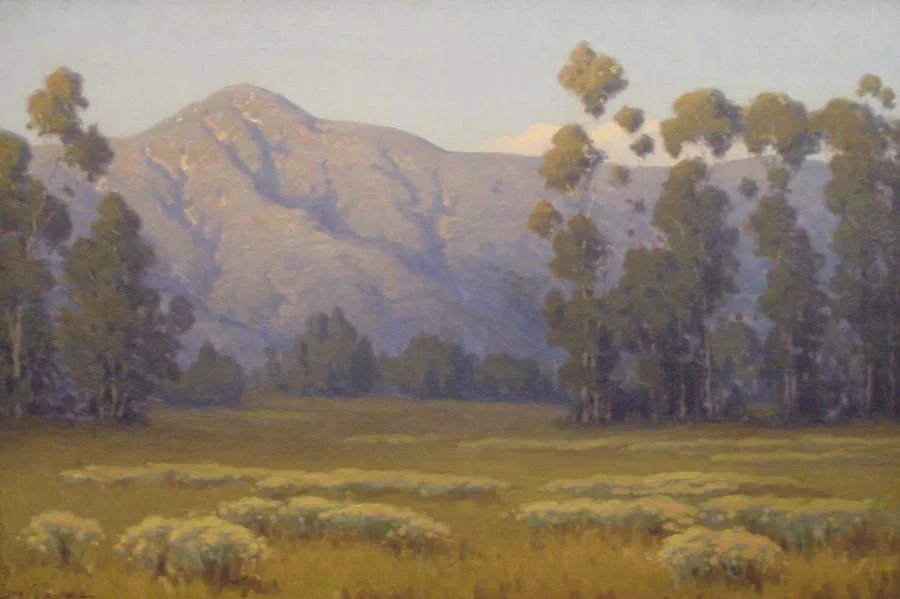The Wildling Art Museum’s exhibition Milford Zornes: An American Artist celebrated the remarkable career of one of California’s most notable artists. A proponent of the California Style of watercolor painting, Zornes gained national acclaim with his vivid colors, expansive brushstrokes, and abstract interpretations of the American landscape. With the assistance of scholar Gordon McClelland, the exhibition consisted of Zornes’ paintings borrowed from various private collections.
Read MoreMuseums form their collections both by design and by accident. They should all have a Collections Plan, so that they can purchase works, as they become available, that relate to their mission and complement their collection. Most, however, are the happy recipients of unexpected gifts. As a fledgling museum, the Wildling Art Museum is still developing its Collections Plan and raising funds necessary to realize its objectiv es. For some years, the Museum was able to put aside 5 percent of every $1000 donated for general operating support into an Acquisitions Fund. We have purchased a few works using those funds, but many desirable art works are being sold at prices beyond our means.
Read MoreFrom the depths of the sea to the dizzying heights of the Sierra Nevada, the Wildling Art Museum covers exceptional wilderness art wherever it appears. For the many who have not experienced the Southern Sierra, the four artists in this exhibition, Jeff Jones, Tom Killion, Zenaida Mott, and Matthew Rangel, give us that gift through their paintings, prints, photographs, and drawings. Those of us who have experienced the high country will understand their dedication to seeking out the vistas of the Southern Sierra that few of us see, translating them skillfully through their brushes, paints, carved wood, inks, cameras, pencils, pens, and plates – allowing us to consider anew our relationship to and appreciation for nature.
Read MoreDiving into the undersea world for the first time, the Wildling Art Museum showcases the work of three exceptional photographers in the exhibition Wildlings from the Deep. With a cast of ocean-going personalities, both micro and macroscopic, each artist captures unique aspects of the diverse and elegant watery world that comprises an amazingly complex ecosystem.
Read MoreI have taken the title for this exhibition of California Impressionist paintings, lent by The Irvine Museum, from the magazine The Land of Sunshine, published by the colorful Charles Lummis between 1894 and 1902. With a large national circulation, this monthly magazine touted the pleasures of Southern California: its year-round sunshine, temperate climate, and indigenous culture. Backed by the Los Angeles Chamber of Commerce, The Land of Sunshine did what it set out to do–lure many people to move to the Los Angeles area. Among these were artists who would soon make this region a mecca for Impressionist landscape painting.
Read MoreMany late nineteenth-century artists used nocturnal paintings to represent spiritual transcendence that was a departure from the naturalism and literalism of the Hudson River School painters who relied on sharp details and recognizable locations. In the wake of Charles Darwin’s momentous discoveries, nocturne painter’s ambiguous, unsettling scenes became spiritual substitutes for traditional religious doctrine. In 1899, at an exhibition in New York, California artist Charles Rollo Peters (1862-1928) exhibited a series of sixteen moonlit views of California missions. His nocturnal paintings had an enormous impact on East Coast painters such as Frederic Remington (1861-1909), best known for his images of the American West and young emerging talent such as DeWitt Parshall (1864-1956) who would ultimately reside in Santa Barbara. Peters’ Monterey ranch became an artist’s hub particularly for those who sought to learn how to master the technical and aesthetic qualities of painting darkness. His lone, ramshackle Spanish adobes became his signature motif and best express the principles of tonal painting that he had learned in Paris. Painting nocturnes is one adventurous way for an artist to experience the realm of the unknown: either something never seen before, or a familiar subject seen in an unfamiliar way.
Read MoreBorn October 1, 1936 in Yonkers, New York, Joe Abbrescia was an artist from childhood, demonstrating early talent for drawing and painting. He trained formally at the American Academy of Art in Chicago and went on to make art his life’s work - as an Army illustrator on base in Anchorage, a commercial artist for a major design firm in Chicago, and for twenty years at the Village Art School (Skokie, Illinois) which he established in 1965 with brothers Dominick and John. In time, the Art School earned recognition as one of America’s finest centers for art education, attracting beginning and veteran artists alike.
Read MoreThe Wildling Art Museum was honored to exhibit the work of the revered artist, Russell Chatham. Chatham is one of those rare individuals who is both visual and verbal. His emotional life is expressed brilliantly in both painting and writing. The paintings and lithographs in the exhibition, mostly from the artist’s own collection, spoke for themselves. They are lovingly brushed symphonies of the most subtle color, true tone poems in the tradition of the turn -of-the century Tonalists, like his grandfather, the San Francisco painter Gottardo Piazzoni.
Read MoreFragile Environments: The Photographs of Roger Craton and Clyde Butcher explores the two distinct ecological environments of the lush, humid Florida wetlands and the icy continent at the South Pole. Though observably and geographically polar opposites, these environments share the same threats — global warming, pollution, overfishing, and human intrusion — to their fragile systems. These contrasting views provide visual testament to the diversity and beauty of this planet.
Read MoreDick Smith and his Backcountry Wilderness is an unusual exhibition for the Wildling Museum: art, history, and natural history all wrapped up in one. The multi-disciplenary content of the exhibition is due in part to the nature of the subject, because Dick Smith was a Renaissance man: a journalist, photographer, and map-maker, an artist in both two and three-dimensional materials, a naturalist, historian, backpacker, and environmentalist.
Read MoreIt is my goal with the project Between Light and Shadow to both celebrate our newly protected national jewel and help solidify its preservation by raising the awareness needed to ensure wise resource management and respectful use. My efforts have resulted in a highly acclaimed book of photographs and creative essays, a film by acclaimed filmmaker Peter Mortimer, and an exhibit of photographs, which, of course, is now showing at the Wildling Art Museum.
Read MoreBotanic illustration has a long and world wide history. The primary objective of the botanic illustrator is always the documentation of species. But behind the most revered illustrations is the artistic impulse—to make the resultant work more than a scientific record, but a thing of beauty—comparable, but distinct, from the plant described.
Read MoreThe world is filled with artists who aspire to faithfully render nature into art. But they are either misguided or uninformed, and certainly deluded. An artist cannot transcribe what he sees in nature into art; he can only translate it through his medium. As the eminent aesthetician, E.H. Gombrich wrote*, “ . . . the correct portrait, like the useful map, is an end product on a long road through scheme and correction. It is not a faithful record of a visual experience but the faithful construction of a relational model.”
Read MoreThis exhibition, “The Arctic National Wildlife Refuge: Seasons of Life and Land,” was the seventeenth exhibition presented by the Museum since it opened in the Keenan-Hartley House in April 2000. Up until then, all our exhibitions had been originated by the Museum, utilizing the donated time and talent of many resourceful guest curators from the community.
Read MoreImages of America’s West as seen through the eyes of Georgia O’Keeffe and other women artists was the focus of the exhibit at the Wildling Art Museum, Los Olivos. More than 30 works spanning the half-century from 1890 to 1940 were on display beginning on March 14, 2004.
Read MoreImages by America’s greatest wilderness photographer were on display at the Wildling Art Museum, Los Olivos, which begun September 28. “Ansel Adams: A Celebration of Wilderness” showcased more than 30 photographs from “The Museum Set”, a collection of 75 images chosen by Adams and printed under his supervision during the last years of his life.
Read MoreLos Olivos ~ Called “Members Collect,” the spring exhibition at the Wildling Art Museum opened March 16 included a group of historic paintings, prints, and drawings featuring America’s wild creatures and wild places borrowed from the private collections of Museum members.
Read MoreThe winter exhibition at the Wildling Art Museum (January 11 through March 7, 2004) featured for the first time the Museum’s growing permanent collection of American wilderness art. Dedicated to a former Board member, the late Bruce S. McCurdy, and entitled “Building A Collection,” the exhibition was intended to both showcase what the Museum acquired thus far in its then short three year existence and to inspire patrons to give additional treasures.
Read MoreLos Olivos ~ Right in time for the holiday season, the Wildling Art Museum in Los Olivos opened an exhibition of paintings, prints, sculpture and photographs featuring America’s wilderness and the “wildlings” that inhabit it, under a blanket of snow.
Read MoreIn keeping with its mission to promote an understanding and appreciation of America’s wilderness through art, the Wildling Art Museum showed the prints of our nation’s best known artist-naturalist, John James Audubon. The Wildling exhibition, entitled “John James Audubon: American Woodsman,” opened on September 14 and continued through December 1, 2002.
Read More